|
|
|
This file is available on a Cryptome DVD offered by
Cryptome. Donate $25 for a DVD of the Cryptome
10-year archives of 35,000 files from June 1996 to June 2006 (~3.5 GB). Click
Paypal or mail check/MO made out to John Young, 251 West 89th Street, New
York, NY 10024. Archives include all files of cryptome.org, cryptome2.org,
jya.com, cartome.org, eyeball-series.org and iraq-kill-maim.org. Cryptome
offers with the Cryptome DVD an INSCOM DVD of about 18,000 pages of
counter-intelligence dossiers declassified by the US Army Information and
Security Command, dating from 1945 to 1985. No additional contribution required
-- $25 for both. The DVDs will be sent anywhere worldwide without extra
cost. |
11 September 2004
P writes:
Well, the geniuses in Nevada are reading your site. Someone explained
IP addresses to them, and how to netmask, so now only folks in the maintenance
team are able to see the webtrends reporting.
The links to it are still in the google cache, and I still have copies of
the months I grabbed - I wish I'd grabbed more.
Since visitors to your site are now getting "HTTP 403.6 - Forbidden: IP address
rejected" messages if they follow your links to the logs, I'm including my
zipfiles [Zipped,
1.2MB].
I've also sent copies of those logs and the link to the google search that
yields the logfiles and the al-ansar.biz link to Robert Halstead, who sounded
like an okay sort of guy in the quotes.
I hope, if there's internal followup, that he'll find the documents useful,
and that if there's external followup, he'll choose a different set of words
to describe Nevada keeping their site running.
31 August 2004
P writes:
Well, the great state of Nevada has at long last yanked the [this] RPG page
offline. I suppose knowing CQ was about to cover it got their ass in
gear. I'll be interested to hear about whether or not you're ever asked
to pull your page down by a court, naturally. It should be very difficult
for them to claim that the pages were supposed to be confidential.
Here's some very useful proof of affirmative neglect of their security. Found
this site via a google search for pages that mention the RPG guide. Totally
publically accessible, as of this evening.
http://webmaster.state.nv.us/Stats_Info/Stats.htm
Absolutely fascinating stuff. Scroll all the way to the bottom, and
look at URLs of the form:
http://stats.state.nv.us/2003/state%20main/jul/default.htm
I just archived a few months' worth - from mid- 2003 to 2004, the RPG page
was consistently highlighted by their own analysis software as one of the
most popular pages. Unbelievable.
Here's another good one, still live because they apparently don't bother
to think very hard in Nevada:
http://www.state.nv.us/nucwaste/states/states.htm
It's an index to a state-by-state inventory of casks awaiting transit and
routes for transit. The routes are illustrated in a nice, simple outline
format.
__________
Cryptome file of the cask-count and shipping-route maps:
http://cryptome.org/nuke-routes/nuke-routes.htm
18 August 2004
P writes:
This is an unbelievable site, and remains unchanged after 9/11 even now three
years and tons of alert levels later. The back story seems to be that they'll
do anything to oppose transshipment of radwaste to Yucca Mountain, including
going into fairly good detail about the construction of the transit casks
and which RPGs will and which will likely not be able to breach the casks.
Source:
http://www.state.nv.us/nucwaste/trans/risk13.htm
Nuclear Waste Transportation Security and Safety Issues
The Risk of Terrorism and Sabotage Against Repository Shipments |
Guidelines for Assessing the Consequences of Terrorist
Attacks Employing Anti-Tank Weapons
The consequences of a successful terrorist attack involving armor-piercing
weapons or other high energy explosive devices will constitute one of the
most important components of a comprehensive assessment of the risk of terrorism
against repository shipments. A new consequence assessment is necessary because
the assessments conducted by DOE and NRC contractors in the late 1970s and
early 1980s are methodologically deficient and based on assumptions that
do not accurately represent the types of shipments likely to be made to a
repository (or storage facility) in the first decade of the 21st century
and the threats those shipments will face.
A meaningful terrorism consequence assessment must employ assumptions consistent
with information about the weapons currently available, and weapons likely
to become available, to potential adversaries and the technical and tactical
expertise of potential adversaries. It must employ assumptions consistent
with current DOE spent fuel and high-level waste transportation plans,
particularly as those plans determine the characteristics of the shipping
casks which will be used and the characteristics of the spent fuel shipped.
In order to be legally sufficient for purposes of the Yucca Mountain
Environmental Impact Statement, a new and comprehensive terrorism consequence
assessment must employ credible worst case assumptions about the timing and
location of a potential attack and weather conditions during and after the
attack, consistent with characteristics of the routes most likely to be used
for shipments to a repository or storage site in Nevada.
Selection of Reference Weapon. British strategic affairs journalist
Brian Beckett wrote one of the earliest references to the potential use of
anti-tank missiles against nuclear waste shipments. In a discussion of the
difficulties terrorists would face in fabricating a nuclear weapon from stolen
fissile material, Beckett noted: "A more obvious danger is posed by nuclear
waste. The likelihood of theft is small because nuclear waste is usually
stored and transported in large metal and concrete drums which would be extremely
difficult to remove. Instead, nuclear waste could be blown up in transit
to spread radioactive contamination in the air. In 1980, the London Observer
reported that a demonstrator carrying a dummy rocket- launcher had walked
onto a railway platform where a train hauling nuclear waste was due to pass
- according to a subsequent statement from British Rail, regulations did
not forbid passengers carrying rocket-launchers from going onto station
platforms." [Ref. 59]
There has been little discussion of the use of anti-tank missiles against
SNF shipping casks in the official debate over nuclear waste transportation
safeguards regulations since the 1980s. Even then, government and university
experts, such as British security specialist Richard Clutterbuck, have minimized
the public health and environmental consequences of successful penetration
of the cask wall unless an attack with anti-tank weapons was accompanied
by a prolonged, engulfing, high-temperature fire. "Nevertheless a well-sited
attack or hijack of a nuclear flask could cause serious disruption by closing
a bottleneck or (with the case of fire creating a fall-out of radioactive
dust) evacuation of a large area for a considerable time while testing, clearing
and removal is completed." [Ref. 60]
The most detailed discussion of potential terrorist use of anti-tank missiles
occurred at the March 23, 1989, DOE public hearing in Reno, Nevada, on the
site characterization plan for Yucca Mountain. Testimony there addressed
not only general concerns, such as the widespread availability of shoulder-fired
weapons and the armor-piercing capability of shaped-charge warheads, but
specific weapons capabilities. Heavier wire-guided missiles such as the U.S.
TOW and the French/NATO Milan were identified as terrorist weapons of choice
because of their armor penetration, effective range, and proven battlefield
performance around the world. [Ref. 55]
We recommend that a new terrorism consequence assessment assume portable
anti-tank weapons as the reference weapon. First and foremost, virtually
all of the anti-tank missiles evaluated in the following discussion have
warheads capable of completely perforating a truck cask and its spent fuel
cargo and are capable of deeply penetrating (if not completely perforating)
a rail cask and damaging the spent fuel inside. These weapons are designed
to hit moving targets at a distance of 30 meters or more, eliminating the
need to capture the cask, and facilitating selection of optimal attack times
and locations. Portability of these weapons allows further flexibility in
attack planning, including use of multiple warheads, and in escape planning.
Many different types of anti-tank missiles are currently being produced in
many different countries, and in some instances, tens to hundreds of thousands
of units of particular designs have been produced. Most older weapons have
been used in battle, and newer versions have been extensively field tested.
The limitations and deficiencies of specific weapons (backblast effects,
operator error in guidance control, guidance system failure, fuse and warhead
failure) are known and can be factored into the consequence assessment. [Ref.
61] Potential adversaries could obtain anti-tank weapons through a variety
of channels, including terrorist state-sponsorship, purchase, theft, or
blackmail.
Weapons Availability and Capabilities. Many portable anti-tank missiles
currently available to potential attackers apparently have armor penetration
capabilities equal to, or exceeding, the M3A1 military demolition charge
used as the reference weapon in the Sandia and Battelle test program. Detailed
performance data on the latest versions of most systems are classified, for
obvious reasons. Given the general trend of improved armor penetration capability
over the past four decades, it should be assumed that even more effective
weapons will become available over the next four decades when repository
shipments occur.
| Table 5 summarizes publicly available performance data on some of the
better known anti- tank missiles currently in use. It is useful to segment
the discussion of these weapons, their availability, and their capabilities
into three chronological groupings.
Table 5
Man-Portable Anti-Tank Weapons
| Weapon |
Country |
Weight |
Range |
Warhead Dia./Wt. |
Armor Penetration |
| Milan Anti-Tank Missile |
France |
32 kg |
2000 m |
133 mm/3.12 kg |
>1000 mm |
| Eryx Anti-Tank Missile |
France |
21 kg |
600 m |
160 mm/ 3.8 kg |
900 mm |
| Panzerfaust 3 Anti-Tank Launcher |
Germany |
13 kg |
300 m |
110 mm/NA |
>700 mm |
| Folgore Anti-Tank System |
Italy |
21 kg |
4500 m |
80 mm/3 kg |
>450 mm |
| Apilas |
South Africa |
9 kg |
330 m |
112 mm/NA |
>720 mm |
| RPG-7 Anti-Tank Launcher |
Soviet Union |
11 kg |
300 m |
85 mm/NA |
330 mm |
| C-90-C Weapon System |
Spain |
5 kg |
200 m |
90 mm/NA |
500 mm |
| AT-4 Anti-Tank Launcher |
Sweden |
7 kg |
300 m |
84 mm/NA |
>400 mm |
| Carl Gustav M2 Recoilless Gun |
Sweden |
15 kg |
700 m |
84 mm/NA |
>400 mm |
| LAW 80 Anti-tank Launcher |
U.K. |
9 kg |
500 m |
94 mm/NA |
700 mm |
| M72 66mm Anti-tank Launcher |
USA |
4 kg |
220 m |
66 mm/NA |
350 mm |
| SMAW |
USA |
14 kg |
500 m |
83 mm/NA |
>600 mm |
| AT-8 Bunker Buster |
USA |
8 kg |
250 m |
84 mm/NA |
NA |
| Superdragon Anti-tank Missile |
USA |
17 kg |
1500 m |
140 mm/10.07 kg |
>500 mm |
| TOW 2 Anti-tank Missile |
USA |
116 kg |
3750 m |
127 mm/28 kg |
>700 mm |
| Javelin AAWS/M |
USA |
16 kg |
2000 m |
127 mm/NA |
>400 mm |
Source: Reference 62 |
First, the earliest shoulder-fired anti-tank weapons, from their origins
in World War II through the 1950s, were recoilless guns and tube-launched
rockets that could deliver a warhead capable of piercing a few inches of
modern armor plate. These weapons include the original German Panzerfaust
series, the U.S. Bazookas, and the Soviet RPG-2. [Ref. 63] Long since
abandoned by modern armies and irregular forces, such weapons could be available
from military museums or private weapons collections. It seems unlikely that
knowledgeable adversaries would use such weapons to attack a shipping cask,
but if skillfully deployed, these weapons could damage or breach certain
cask designs.
The second group of anti-tank weapons, capable of penetrating a foot of armor
or more, evolved in the 1960s and were used extensively through the 1980s.
Important examples are the Soviet RPG-7 and U.S. M72 LAW rocket launchers;
the Swedish Carl Gustav M2 recoilless gun; and the first man-portable guided
missiles: the French SS 10, SS 11, and Entac; the German Cobra; and the British
Vigilant and Swingfire. The new weapons penetrated Cold War arms markets
as quickly as they penetrated tank armor. By 1969, 116,000 Entacs had been
delivered to six countries, and 120,000 Cobras had been sold to 18 countries.
[Ref. 63]
The Soviet RPG-7, shown in Figure 16, first appeared in the early 1960s.
Capable of penetrating a foot of armor at 300 to 500 meters, the RPG-7 and
its successors were widely used by the former Warsaw Pact countries and by
Soviet-supplied guerrilla forces in Africa, Asia, and Latin America. China,
Czechoslovakia, Egypt, Iraq, Pakistan, and other countries made and sold
it. [Ref. 62, 64] Early versions were "easily short-circuited by hanging
chicken wire outside the target, but this defect was rapidly overcome and
present day fuses are reliable." [Ref. 62]

Specifications:
| Caliber of warhead: |
85 mm |
| Maximum velocity: |
300 m/sec |
| Weight in firing order: |
10.15 kg |
| Penetration of armor: |
330 mm |
| Length of launcher: |
950 mm |
| Manufacturer: |
State arsenals, Russia |
| Max. range: |
500 m stationary target |
| |
300 m moving target |
|

Left and right side view of an Afghan Mujahedeen guerilla taking aim with
an empty RPG-7, and showing the sights and pistol grip. |
Figure 16 reproduced by permission of the Publisher from
the Ian V. Hogg, Infantry Support Weapons: Mortars, Missiles, and Machine
Guns Greenhill Military Manual, No. 5, (1995) Greenhill Books, Lionel
Leventhal Limited, London
Figure 16. Schematic, Specifications and Photos of RPG-7 Anti-tank
Missile
Machine Guns, Greenhill Military Manuals, No. 5, Mechanicsburg, PA; Stackpole
Books, 1995
The U.S. M72 66mm LAW (Light Anti-armor Weapon), shown in Figure 17, was
also developed in the 1960s. Ian Hogg describes it as "a revolutionary idea:
a pre-packaged rocket which could be fired and the launcher then thrown
away."[Ref. 62] Like the RPG-7, the M72 is capable of penetrating a
foot of armor, but its effective range is only 170 to 220 meters. Manufactured
by Talley Industries in the U.S. and under license in Norway, it not only
became a NATO standard but was copied and produced in Czechoslovakia and
Russia (as the RPG-18 and RPG-26). Early versions were frequently inaccurate,
corrected by an improved sight and a more powerful rocket motor. [Ref. 62]
M72 66mm Anti-tank Missile

Specifications:
| Caliber of warhead: |
66 m |
| Maximum velocity: |
200 m/sec |
| Weight in firing order: |
3.45 kg |
| Penetration of armor: |
350 mm |
| Length of launcher: |
980 mm |
| Manufacturer: |
Talley Industries, USA |
| Maximum range: |
200 m/sec |
|
| Figure 17a: Schematic and Specifications of the M72 66mm Anti-tank
Missile
|
| Information and photo in Figures 17a and 17b are from
Ian V. Hogg, Infantry Support Weapons: Mortars, Missiles, and Machine Guns,
Greenhill Military Manuals, No. 5, Mechanicsburg, PA; Stackpole Books,
1995
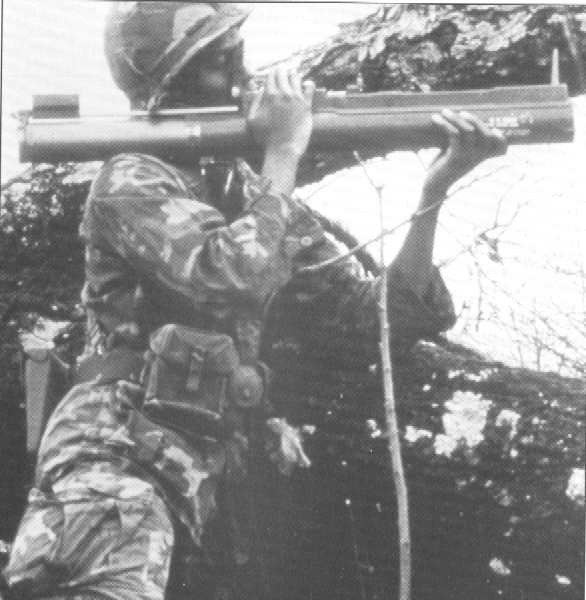
Figure 17b. Photo of the M72 66mm Anti-tank Missile
|
Figure 17a and 17b reproduced by permission of the Publisher
from the Ian V. Hogg, Infantry Support Weapons: Mortars, Missiles, and
Machine Guns Greenhill Military Manual, No. 5, (1995) Greenhill Books,
Lionel Leventhal Limited, London
The third group of weapons, advanced guided missiles capable of penetrating
half-a-yard to a yard or more of armor plate, appeared in the 1970s and 1980s
and are currently in use around the world. By the mid-1980s, Jane's Weapons
Systems listed more than twenty varieties being produced by a dozen countries.
[Ref. 65] Important examples are the U.S. Dragon, Superdragon, and TOW
(Tube-launched, Optically-tracked, Wire-guided) anti-tank missiles and the
French Milan and Eryx anti-tank missiles.
The U.S. Dragon was introduced in 1971, was redesigned twice, and evolved
into the present Superdragon by 1990. (See Figure 18) The current version
is capable of penetrating 18 inches of armor at a maximum effective range
of 1,500 meters. Manufactured by McDonnell Douglas, the Dragon was adopted
by the U.S. Army and Marine Corps and is used by at least 10 other countries.
[Ref 63.] The Dragon saw limited use in Operation Desert Storm. One authoritative
source reports that "Iraq is believed to have captured Dragons from Iran."
[Ref. 66] The Dragon guidance system has been criticized for requiring excessive
gunner control, inaccuracy in general, and some early versions suffered recurrent
rocket thruster failure. [Ref. 65, 66] In March, 1997, a woman exploring
caves near Fallon, Nevada, found a Dragon missile launcher. Noting the 1977
date on the launcher tube, the Churchill County Sheriff speculated that the
device could have been obtained through the surplus arms market or could
have been someone's personal souvenir. [Ref. 67]
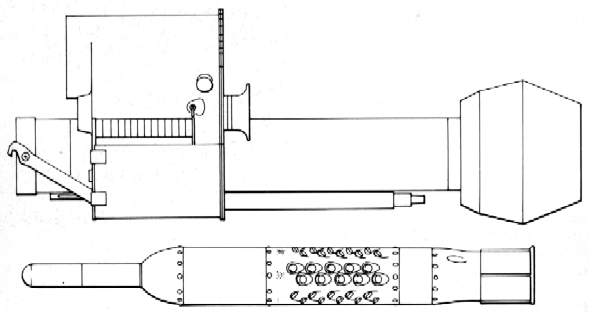
Figure 18a: Schematic of the Superdragon Anti-tank Missile
|
| Specifications: |
| Guidance: |
Semi-automatic, wire |
| Warhead diameter: |
ca 140 mm |
| Launch unit weight: |
6.9 kg |
| Missile weight: |
10.07 kg |
| Missile length: |
852 mm |
| Max. effective range: |
1500 m |
| Max. velocity: |
ca 200 m/sec |
| Penetration of armor: |
>500 mm |
| Manufacturer: |
McDonnell Douglas Aerospace, USA |
|
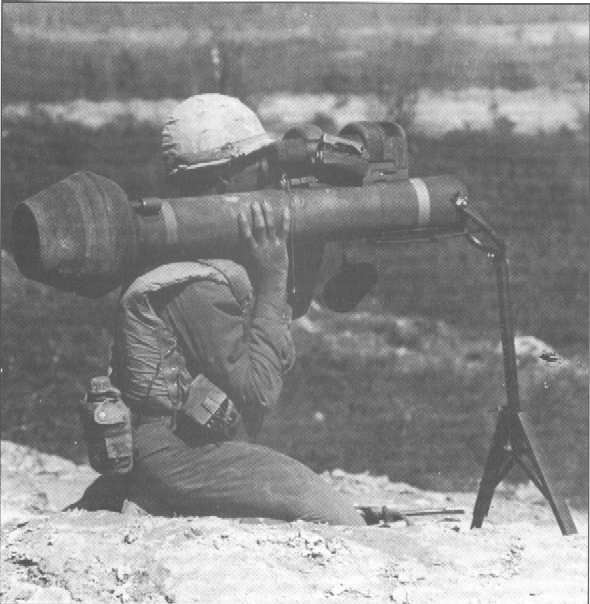
Figure 18b: Specifications and Photo of the Superdragon Anti-tank Missile
|
Figure 18a and 18b reproduced by permission of the Publisher
from the Ian V. Hogg, Infantry Support Weapons: Mortars, Missiles, and
Machine Guns Greenhill Military Manual, No. 5, (1995) Greenhill Books,
Lionel Leventhal Limited, London
The U.S. TOW anti-tank missile of Iran-Contra fame was introduced for service
in the U.S. Army in 1970. Current versions are capable of penetrating more
than 30 inches of armor, or "any 1990s tank," at a maximum range of more
than 3,000 meters. It can be fired by infantrymen using a tripod, as well
from vehicles and helicopters, and can launch 3 missiles in 90 seconds.
Manufactured by Hughes Aircraft Company, the TOW is "the most widely distributed
anti-tank guided missile in the world," with over 500,000 built and in service
in the U.S. and 36 other countries. The TOW has extensive combat experience
in Vietnam and the Middle East. Iran may have obtained 1,750 or more TOWs
and used TOWs against Iraqi tanks in the 1980s. [Ref. 66]
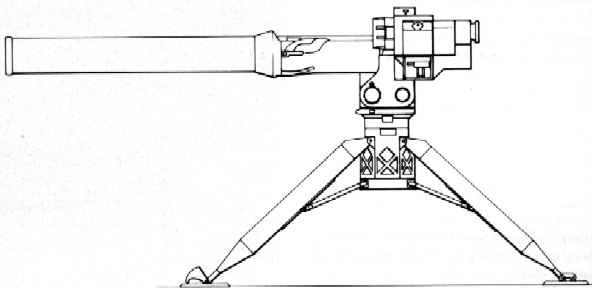
Figure 19a: Schematic and Specifications of the TOW 2 Anti-tank Missile
Specifications:
| Guidance: Semi-automatic, wire |
| Warhead Diameter: 127 mm |
| Launch unit weight: 87.5 kg |
| Missile weight: 28 kg |
| Missile length: 1174 mm |
| Max. effective range: 3750 m |
| Max. velocity: 200 m/sec |
| Penetration of armor: >700 mm |
| Manufacturer: Hughes Missile Systems, USA |
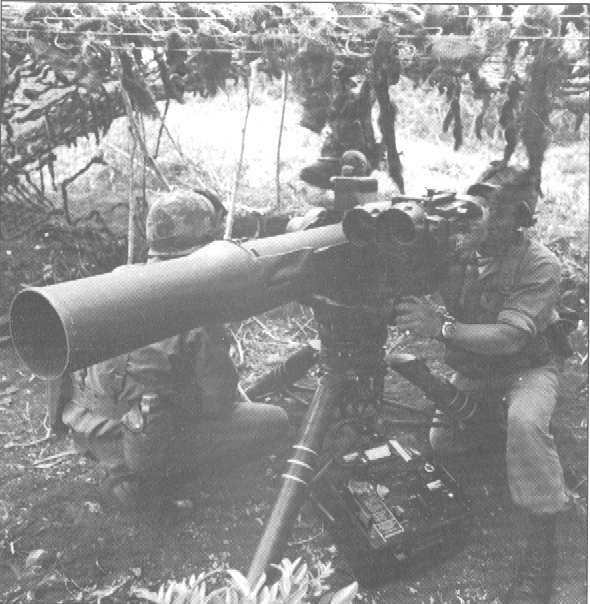
Figure 19b. Photo of the TOW Anti-Tank Missile
|
Figure 19a and 19b reproduced by permission of the Publisher
from the Ian V. Hogg, Infantry Support Weapons: Mortars, Missiles, and
Machine Guns Greenhill Military Manual, No. 5, (1995) Greenhill Books,
Lionel Leventhal Limited, London
The Milan anti-tank missile, developed by a French-led consortium, is considered
"one of the most successful" man-portable guided missiles. The current version,
the Milan 3, is capable of penetrating over 40 inches of armor at a maximum
range of 2,000 meters. Manufactured by Aerospatiale-Missiles in France and
under license in Britain, Germany, and India, "several tens of thousands
have been produced, it is used by most NATO and several other armies, and
the basic principle has been widely copied." [Ref. 62] The Milan is
noted for its sight-on- target guidance system, its night vision sight, and
its ability to defeat reactive armor with an extended explosive probe. In
addition to the NATO forces, Milan is used by Iran, Iraq, Pakistan, and India.
The Milan has extensive combat experience in Chad, the Iran-Iraq Gulf War,
and the Falklands/Malvinas War between Great Britain and Argentina.
[Ref. 55,62]
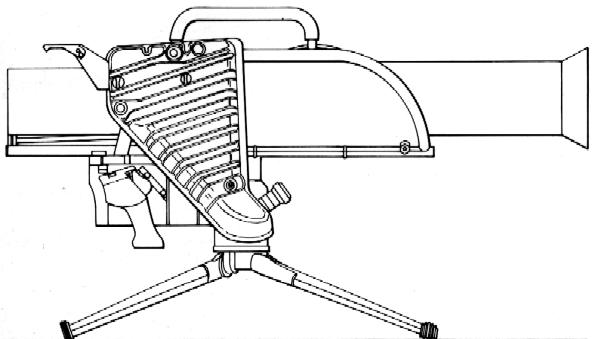
Specifications:
| Guidance: |
Semi-automatic, wire |
| Warhead diameter: |
133 mm |
| Warhead weight: |
3.12 kg |
| Launch unit weight: |
16.9 kg |
| Missile weight: |
11.91 kg |
| Missile length: |
1200 mm |
| Max. effective range: |
2000 m |
| Max. velocity: |
210 m/sec |
| Penetration of armor: |
>1000 mm |
| Manufacturer: |
Aerospatiale-Missiles, France |
Figure 20a: Schematic and Specifications of the MILAN Anti-tank Missile
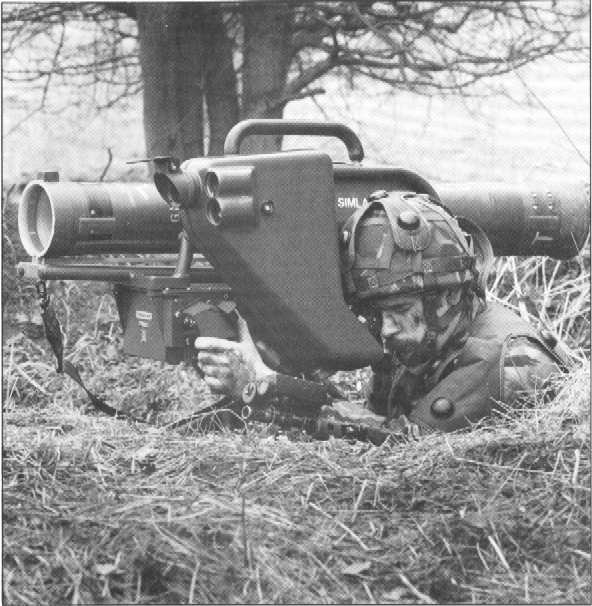
Figure 20b. Photo of the Milan Anti-tank Missile
|
Figure 20a and 20b reproduced by permission of the Publisher
from the Ian V. Hogg, Infantry Support Weapons: Mortars, Missiles, and
Machine Guns Greenhill Military Manual, No. 5, (1995) Greenhill Books,
Lionel Leventhal Limited, London
We recommend that a new consequence assessment evaluate a terrrorist attack
using anti-tank weapons at least equal to current versions of the U.S. TOW
and French Milan missiles. For purposes of scenario development, the reference
weapon should be assumed to be man- portable, operated by one to three persons,
capable of firing up to three missiles, with a minimum range of 75 meters
and a maximum range of 2,000. The reference weapon should be assumed capable
of penetrating 40 inches or more of armor plate steel, with a hole diameter
of 3 to 6 inches. Based on U.S. Army experience with the TOW, a hit-probability
of 90 percent or greater should be assumed.
Selection of Reference Shipping Cask Designs. The shipping casks used for
repository shipments will have different design configurations and use different
structural and shielding materials than the casks that were assumed in the
DOE and NRC consequence assessments. Some of these differences may make them
more vulnerable to attack with armor-piercing weapons or high-energy explosives.
DOE has not formally selected cask designs for repository shipments. Under
the provisions of DOE's current transportation privatization proposal, cask
procurement decisions ultimately may be made by transportation service
contractors. Moreover, with one exception, the cask designs usually assumed
for repository shipments have not yet completed the NRC certification process.
Based on the information available as of June, 1997, it is probable that
the majority of truck shipments to a repository, assuming repository operations
begin in 2010, will use GA 4 and GA 9 casks or new high-capacity casks of
similar design. If Congress directs DOE to begin shipments to an interim
storage facility in or about the year 2000, currently licensed casks, or
enhanced-capacity casks based on current designs would probably be used for
the majority of truck shipments during the first five years of operation,
after which GA 4/9 casks or similar designs would carry most SNF cargoes.
[Ref. 9]
Based on the information available as of June, 1997, it is probable that
the majority of rail shipments to a repository, assuming repository operations
begin in 2010, will use new high- capacity casks similar to either the currently
licensed NAC-TSC or the proposed design for the large MPC Rail Transporter.
If Congress directs DOE to begin shipments to an interim storage facility
in or about the year 2000, it is likely that relatively few rail shipments
would be made during the first five years of operation, and those shipments
would use currently licensed casks, the IF-300 and the NAC-TSC, to the extent
of their availability. [Ref. 9]
The new-high capacity truck and rail casks assumed for repository shipments
carry payloads three to four times greater than the currently licensed NAC
LWT and IF-300 casks. The increase in truck cask capacity results primarily
from lower shielding requirements for old, cooler SNF and from the use of
different shielding materials. The increase in rail cask capacity results
partly from lower shielding requirements for old, cooler SNF and the use
of different shielding materials, but also from an overall increase in loaded
cask weight to 125 tons, opposed by the Association of American Railroads
because it exceeds the maximum weight limit for universal railcar interchange.
Table 6 summarizes available information on current and proposed cask shell
materials and thicknesses.
Table 6
|
| Shipping Cask Shell Materials and Thicknesses(Inches) |
| Shell Materials |
NSF-4 |
GA-4 |
GA-9 |
NAC-TSC |
Lg MPC |
Sm MPC |
| Containment: Stainless Steel |
1.73 |
2 |
2.13 |
4.1 |
5.25 |
4.38 |
| Gamma Shield: Lead |
6.6 |
|
|
3.7 |
0.5 |
0.5 |
| Gamma Shield: Depleted Uranium |
|
2.63 |
2.45 |
|
1.5 |
1.5 |
| Neutron Shield: Borated Water |
4.5 |
|
|
|
|
|
| Neutron Shield: Borated Polypropylene
|
4.5 |
3.5 |
5.5 |
6 |
4 |
| Total Thickness |
12.86 |
9.13 |
8.08 |
13.3 |
13.25 |
10.38 |
| Source: Calculated from References 27 and 53 |
|
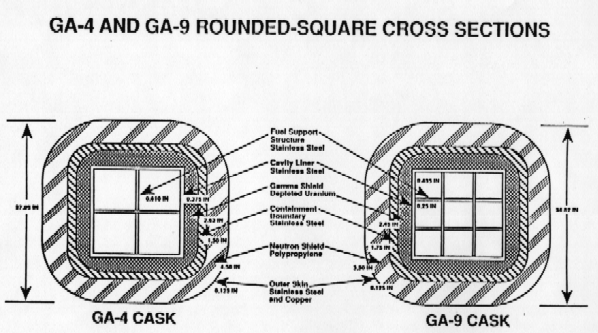
Figure 21. GA 4 and GA 9 Truck Casks (Cross-section) |
Figure 21 shows a cross-section of the GA 4 and GA 9 casks. The side-to-side
width of the GA 4 is 37 inches, while the GA 9 is 35 inches. The GA 4/9 designs
differ from the casks assumed in the DOE and NRC consequence assessment in
several respects: rounded square versus circular body, polypropylene neutron
shielded versus steel shelled water jacket, and depleted uranium gamma shield
versus lead gamma shield. These differences could result in greater vulnerability
to attack with the reference weapon. The elimination of the water jacket
could result in a larger release of respirable particulates.
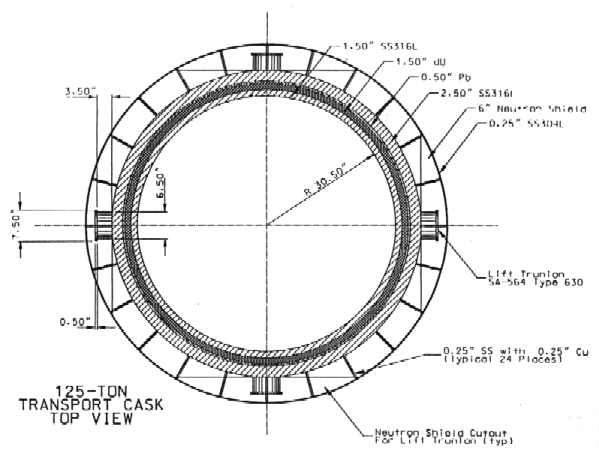
Figure 22. Large MPC Rail Transport Cask (Cross-section) |
Figure 22 shows a cross-section of the 125-ton MPC transportation cask. The
side-to-side diameter of the 125-ton MPC transportation cask is 85 inches.
The MPC transportation cask design differs from the casks assumed in the
DOE and NRC consequence assessment in its polypropylene neutron shield (versus
steel shelled water jacket) and its composite lead/depleted uranium gamma
shield (versus solid lead gamma shield on the NFS-4 and solid depleted uranium
gamma shield on the IF-300). There is insufficient information to determine
whether or not these differences could result in greater vulnerability to
attack with the reference weapon. The elimination of the water jacket could
result in a larger release of respirable particulates.
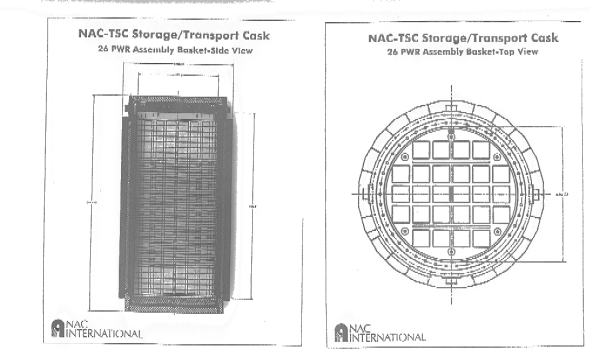
Figure 23. NAC-TSC Storage/Transport Cask |
Figure 23 shows a cross-section of the NAC-TSC Storage/Transport cask. The
side-to-side diameter of the NAC-TSC is about 96 inches. The NAC-TSC design
differs from the casks assumed in the DOE and NRC consequence assessment
in its polypropylene neutron shield (versus steel shelled water jacket).
The NAC-TSC's solid lead gamma shield is comparable to, although thinner
than, the solid lead gamma shield on the NFS-4. There is insufficient information
to determine whether or not these differences could result in greater
vulnerability to attack with the reference weapon. The elimination of the
water jacket could result in a larger release of respirable particulates.
We recommend that the GA 4 cask be used as the reference truck shipment target
and that the NAC-TSC be used as the reference rail shipment target for terrorism
consequence assessment by NRC, DOE, and the State of Nevada. The GA 4 truck
cask should be used because its design has nearly completed the NRC certification
process and because it is designed to transport PWR SNF, the predominant
type of SNF in the projected repository inventory. The NAC-TSC should be
used because it has completed the NRC certification process and because it
is also designed to transport PWR SNF.
Selection of Reference Spent Fuel Characteristics. The spent fuel
shipped to a repository or centralized storage facility will have different
radiological and physical characteristics and will be shipped in larger
quantities per cask than was assumed in the DOE and NRC consequence assessments.
The reference spent fuel for repository shipments is a 10-year-old cooled
PWR assembly. Under contract to DOE, Oak Ridge National Laboratories has
characterized a wide variety of SNF and HLW types using the ORIGEN2 computer
code. [Ref. 68] Table 7 summarizes the estimated inventory of major
radionuclides and total radioactivity in one MTU of the reference spent fuel,
in a truck cask with four reference assemblies, and a rail cask with twenty-one
reference assemblies. [Note that the NAC-TSC rail cask contains 26 PWR
assemblies, resulting in about a 24 percent greater source term.]
The spent fuel radionuclide inventory (calculated according to initial
enrichment, burnup, and cooling time) and the quantity of spent fuel (weight
and number of assemblies) per package determine the total amount of radioactivity
(the source term) that could be released in a terrorist attack. The physical
characteristics of the spent fuel and its response to blast impact and heat,
particularly the fracture characteristics and the size distribution of particles,
determine the amount of radioactive materials released from the cask and
their dispersion, health and environmental impacts, and cleanup requirements.
Table 7
|
| ESTIMATED INVENTORY, BY MAJOR RADIONUCLIDE, OF
REFERENCE PWR SPENT FUEL |
| Nuclide |
curies/MTU |
Percent of Total |
curies/TRUCK CASK |
curies/RAIL CASK |
| Kr 85 |
5,660 |
1.2 |
10,188 |
53,487 |
| Sr 90 |
67700 |
14.39 |
121,860 |
639,765 |
| Y 90 |
67700 |
14.4 |
121,860 |
639,765 |
| Cs134 |
7420 |
1.58 |
13,356 |
70,119 |
| Cs137 |
98200 |
20.89 |
176,760 |
927,990 |
| Ba137m |
93000 |
19.77 |
167,400 |
878,850 |
| Pm147 |
9120 |
1.94 |
16,416 |
86,184 |
| Eu154 |
5700 |
1.21 |
10,260 |
53,865 |
| Pu241 |
95700 |
20.36 |
172,260 |
904,365 |
| Cm244 |
2880 |
0.61 |
5,184 |
27,216 |
| Other |
171 |
3.65 |
30,895 |
162,200 |
| Total |
470,244 |
100 |
846,439 |
4,443,806 |
| Source: Reference 68
The Reference PWR Assembly is a Westinghouse 17x17, 0.45 MTIHM, Initial
Enrichment 3.72%, Burnup 40,000 Mwd/MTIHM, Decay Time 10 years |
|
We recommend that the reference spent fuel, as characterized by Oak Ridge
National Laboratories using the ORIGEN2 computer code, be used for terrorism
consequence assessment by NRC, DOE, and the State of Nevada.
Selection of Credible Worst Case Attack Time, Location, and Weather
Conditions. For purposes of the Yucca Mountain Environmental Impact
Statement, a new and comprehensive terrorism consequence assessment must
employ credible worst case assumptions about the timing and location of a
potential attack and weather conditions during and after the attack, consistent
with characteristics of the routes most likely to be used for shipments to
a repository or storage site in Nevada.
Combinations of location, timing, and weather conditions are important
determinants of impacts on public health and safety, environmental quality,
and business activities and property values. These factors determine the
number of people initially exposed to incident consequences, the nature and
duration of exposure to incident consequences (especially exposure to released
radionuclides), and the timing and effectiveness of emergency response
activities.
The following examples are offered to illustrate the level of detail that
should be expected in a comprehensive consequence assessment.
Urban location, attack on rail or truck cask. Given current routing
assumptions, the consequence assessment should evaluate an attack at an urban
location in metropolitan Clark County. The assessment should assume that
the attack occurs during heavy evening commuter traffic congestion or during
a nighttime special event. The assessment should assume worst-case weather
conditions. High winds with no precipitation could cause rapid and widespread
dispersal of radioactive particulates. Concentrated heavy rainfall could
disperse radioactive materials through runoff and flash flooding. Credible
severe weather scenarios for Clark County include a 12 hour period of sustained
winds in excess of 30 miles per hour and 6 or more inches of rain during
a 24 hour period. Immediate special concerns would be the evacuation of as
many as several hundred thousand visitors and residents and the potential
contamination of hotel, resort, and casino properties worth billions of dollars.
Rural location, attack on rail cask. Given current routing assumptions,
the consequence assessment should evaluate an attack on a rail shipment at
a rural location in southern Nevada between Las Vegas and the Utah-Nevada
state line. The assessment should assume that the attack occurs at a time
when emergency response would be slowed or delayed by other events or limited
personnel, for example, during a weekend or on a major holiday. The assessment
should assume worst-case weather conditions appropriate for the postulated
attack location. If the attack occurred along a route segment subject to
flash flooding, a credible severe weather scenario would be 6 or more inches
of rain during 24 hours. Immediate special concerns, depending upon the
postulated location of the attack, could include contamination of Indian
reservation lands, private residences, agricultural lands, and Lake Mead
(a major recreational resource and water supply source for Arizona, California,
and Nevada). [Ref. 69]
[ Table of Contents ]
[ Executive Summary ]
[ Introduction ]
[ Nuclear Waste Transportation Risks ]
[ Outlook for Shipments to Nevada ]
[ Shipment Characteristics Relevant to Terrorism Risk Assessment ]
[ Previous Assessments of Terrorist Attack Consequences ]
[ Preferred Approach to Assessing the Risks of Terrorism and Sabotage Against Repository Shipments ]
[ Guidelines for Assessing the Consequences of Terrorist Attacks Employing Anti-Tank Weapons ]
[ Recommendations ]
[ References ]
[ Appendices ]
…
Return to the
Agency for Nuclear
Projects
Home Page
State of Nevada
Agency for Nuclear Projects
1802 N Carson #252
Carson City, NV 89701
(775) 687-3744 voice
(775) 687-5277 fax
nwpo@govmail.state.nv.us e-mail
*












